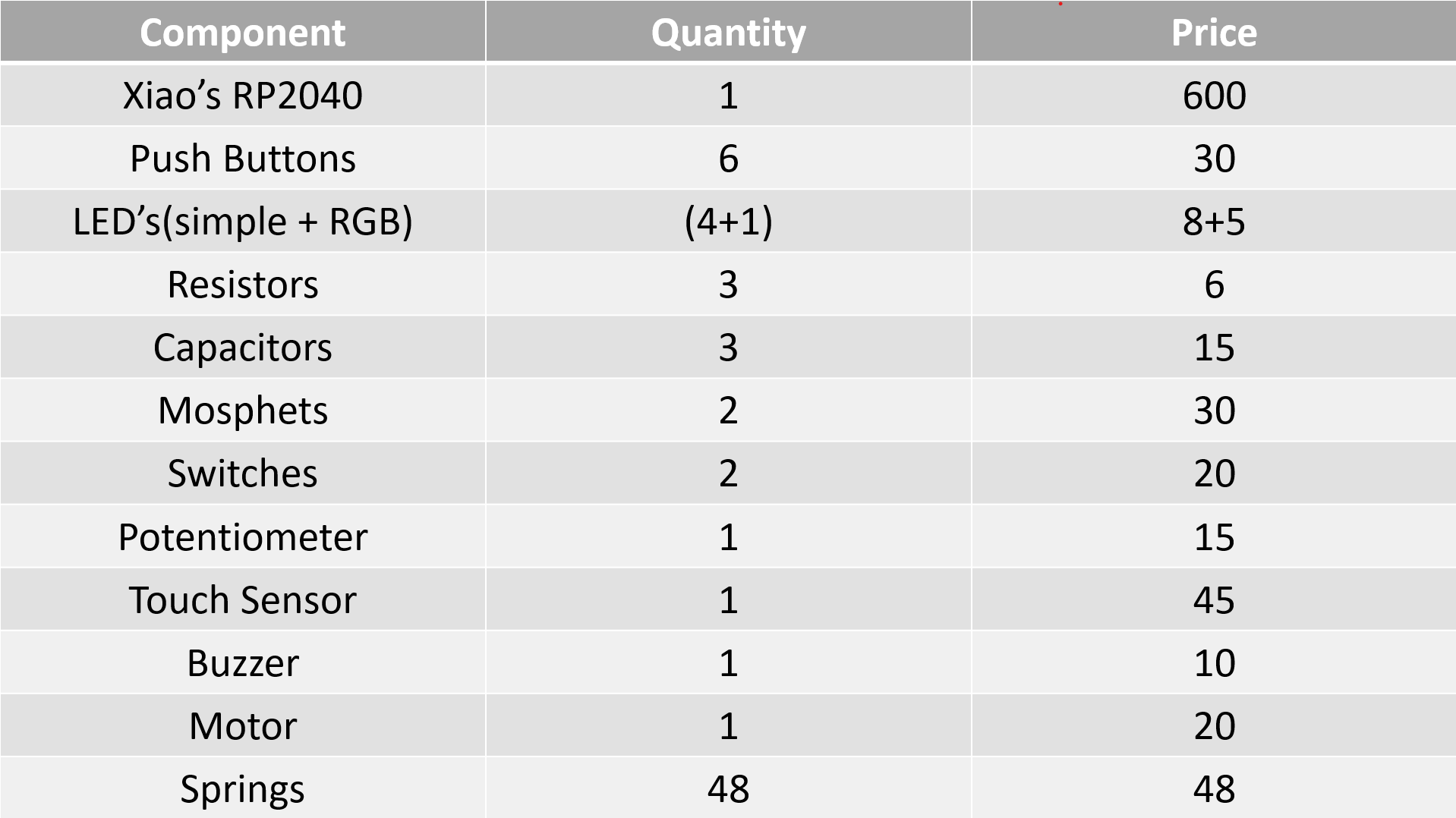
This week I proposed a final project masterpiece that integrates the range of units covered, answering several questions.
This Electronics Learning Kit is designed to engage students aged 9 to 14 in hands-on learning. It will teach them the fundamentals of electronics and digital logic through interactive components and projects. The kit will include various electronic components, logic gates, and microcontroller-based experiments.
Existing educational kits like LittleBits, Snap Circuits, and Arduino starter kits offer basic electronics education. However, none integrate comprehensive logic gate learning with microcontroller applications at an affordable price.
I will design a custom PCB that integrates basic electronic components (LEDs, resistors, capacitors, sensors) with logic gates and a microcontroller (Xiao's RP2040). Additionally, I will create a user-friendly enclosure and educational materials, including step-by-step project guides and tutorials.
Materials:
1. Cardboard (5mm) - for outer box casing.
2. FR1 Material (2mm) - for pcb milling.
3. Stickers and labels for the kit.
Components will be sourced from electronic suppliers such as Robu , Digi-Key, and local electronics stores. Enclosure materials can be sourced from local craft or hardware stores.
Below all the purchase links are provided for the components.
1. Xiao RP2040.
2. LED's.
3. RGB.
4. Buzzer.
5. Push Buttons.
6. Switches.
7. Potentiometer.
8. Touch Sensor.
9. DC motor.
10. Resistors.
11. Capacitors.
12. Mosfets.

Overall cost of the project will be 850 ind rupees approximately, it may vary depends on the electronics component values in various regions.
Custom PCB with integrated components
Enclosure for housing the kit
Educational materials and project guides
Process Used:
1. PCB Milling
2. Laser Cutting
3. 3D Printing
4. Vinyl Cutting
The following contains the minimum criteria for a successful final project:
Ease of Use: Students can assemble and use the kit without extensive prior knowledge, following provided guides.
Educational Value: Students demonstrate an improved understanding of basic electronics and logic gates through pre- and post-usage assessments.
Component Durability: The kit's components withstand regular use without malfunctioning.
Cost Efficiency: The final production cost per kit is significantly lower than existing educational kits with similar functionalities.
Visual Appeal: The kit is visually engaging and attractive to students, with clear labeling and a well-designed enclosure.
Interactive Learning: The logic gate and microcontroller experiments work seamlessly, with LEDs lighting up correctly based on input configurations.
Safety: The kit meets safety standards for use by children aged 9 to 14, with no sharp edges or hazardous materials.